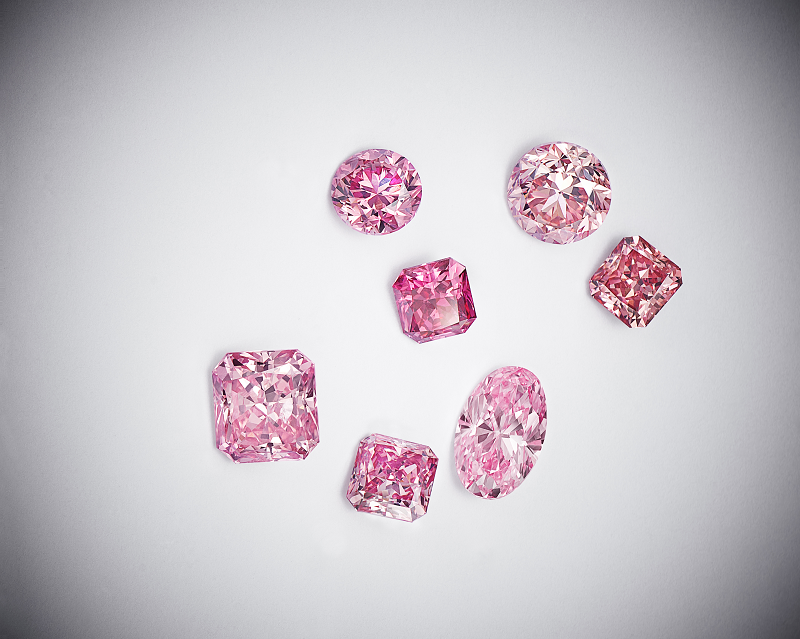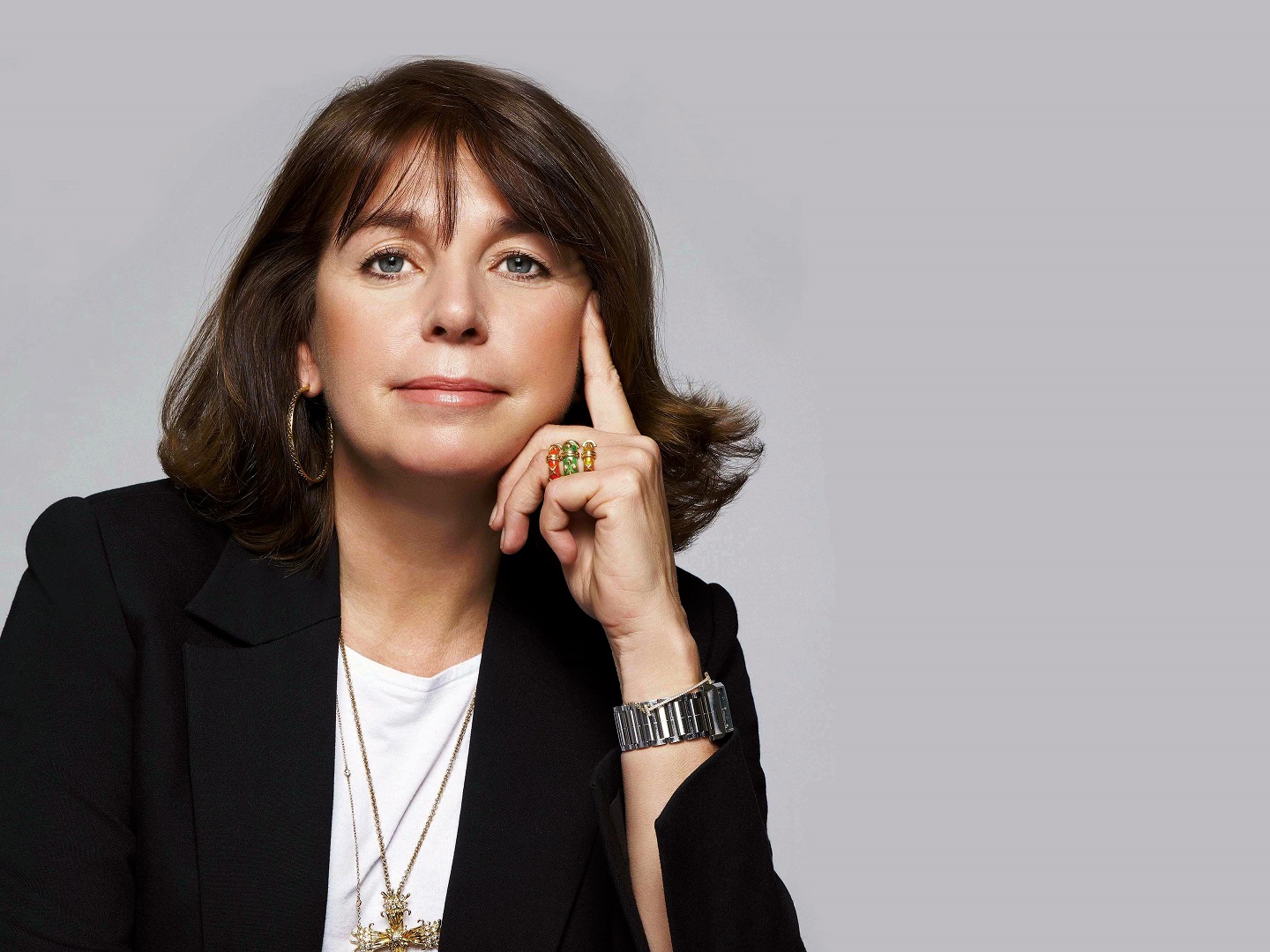
She was recently in Sydney for 'Diamonds & Wonders' (All photos: Tiffany & Co)
People talk a lot about grit when it comes to achieving success but physical stamina counts too. Case in point? The indefatigable Victoria Reynolds, vice president and chief gemologist for pre-eminent jewellery company Tiffany & Co. Having just played a key part in the grand opening of the company’s historic store at the corner of 57th Street and Fifth Avenue in New York City and whose renovation was, in its president and CEO Anthony Ledru’s own words, “a massive endeavour”, Reynolds coolly flew halfway across the world — from the American east coast to Los Angeles, and then all the way down to the Southern Hemisphere to Sydney — for just two short nights before zooming off to Geneva, Switzerland. Those curious enough might ask: What necessitated such a whirlwind trip to Australia? The answer is simple: diamonds. But not just any diamonds; exceedingly rare pink ones.
Mine + matter
Tiffany & Co had recently procured a bespoke curation of pink diamonds sourced from Rio Tinto’s famous Argyle mine, now closed, in the remote East Kimberley region of Western Australia. To underscore the importance of this acquisition, Argyle remains the only place in the world where pink diamonds have ever been significantly and steadily found in modern history. To celebrate this one-of-a-kind bonanza, a select group of the maison’s clients will be accorded the privilege of viewing these remarkable stones (they have all been sold to a single buyer) at a series of carefully-curated global high jewellery events, including the Diamonds & Wonders travelling exhibition, which first debuted in Park City, Utah, the US.
Chaperoning 35 Argyle diamonds — and other priceless baubles — on a world tour is an unusual task indeed but it is one Reynolds clearly revels in. Showing no signs of jet lag or fatigue and even good-naturedly sitting down to a raucous all-girls’ dinner at a trendy Sydney restaurant, Reynolds visibly lights up when one broaches her favourite topic: gemstones.
“This is truly once in a lifetime and the stuff my dreams are made of,” she enthuses, referring to her diamond-studded call of duty. “We are here because this is the first collection that Argyle has ever allowed somebody to name. While they have partnered with other jewellers before, they’ve never had a named collection in their history, so we are very proud of that.”
mix_pk_dia_group_argylestones_v1_tm_112222_cv2.jpg
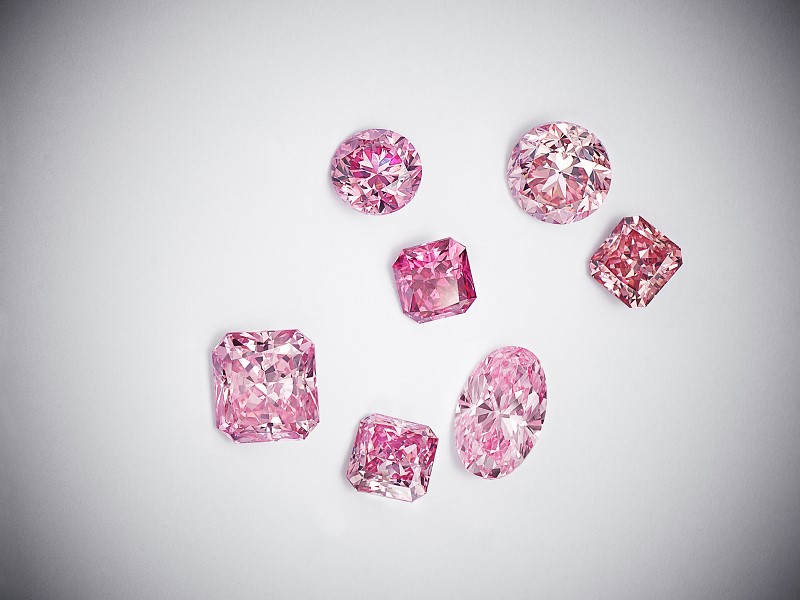
The Argyle diamond mine is nowhere as old or historic as some of the legendary ones, such as India’s Kollur mine whose stones, extracted over the course of 2,000 years, helped coin the blanket term “Golconda diamonds”, and which include household names like the colourless 105-carat Koh-i-Noor (part of the British crown jewels but which was conspicuously missing from the pomp and ceremony of King Charles III’s recent coronation); the blue and supposedly cursed 45.52-carat Hope Diamond, now in the care of the Smithsonian Institution; and the pale blue 0.21-carat Idol’s Eye currently being fought over by members of the Qatari royal family.
Relatively young by comparison, Argyle opened in 1983, the same year Great Britain phased out £1 bank notes, replacing it with the pound coin, and started producing the first of what would become a staggering haul of diamonds (reports put the figure at 865 million carats of rough diamonds) in 1987.
The only known significant source of pink and red diamonds, accounting for over 90% of the world’s supply, Argyle has also produced diamonds in other hues, including champagne, cognac and blue.
Just three years ago, in the same year that is indelibly scarred by the onset of the Covid-19 pandemic, Argyle closed for good due to two key reasons: the inevitability of finite resources as well as the mine operator’s decision to rehabilitate the 124-acre site.
Dayiwul dreaming
Distinctive pink diamonds remain Argyle’s legacy to the world but to the local Gija and Miriwoong people, the land itself is and will always be venerated. At what is called Barramundi Gap in East Kimberley, a place long held sacred, particularly for women, Ngarrangkarni myth and creation stories speak of a Dreamtime tale when Dayiwul the giant barramundi was being stalked by three old Gija women. Using spinifex nets in a traditional fishing method called kilkayi, they attempted to ensnare Dayiwul, cornering her in a cavern. Finding an opening in the rock, in what is now called Barramundi Gap, Dayiwul leapt through, shedding some of her scales in the process, which magically transformed into diamonds of glistening rainbow hues upon touching the water.
Now that the mine has ceased operations, Rio Tinto is in the midst of completing its closure activities while engaging with the Gija and Miriwoong traditional owners on how best to do so.
“This is also what makes this Argyle collection such a good fit with us,” Reynolds says, alluding to the company’s own well-known Diamond Craft Journey whereby Tiffany & Co ensures responsible practices are adhered to every step of the way, from responsible sourcing to encouraging high standards in the mining industry, improving local economies as well as protecting human rights and ecologically-sensitive lands.
“The Argyle stones are certified … you will know exactly where it was mined and also cut locally. There is this chain of custody, of traceability and to be able to have all of this in one collection of 35 extraordinary pink stones is simply amazing.”
tco_hj_08052023_0136_1.jpg
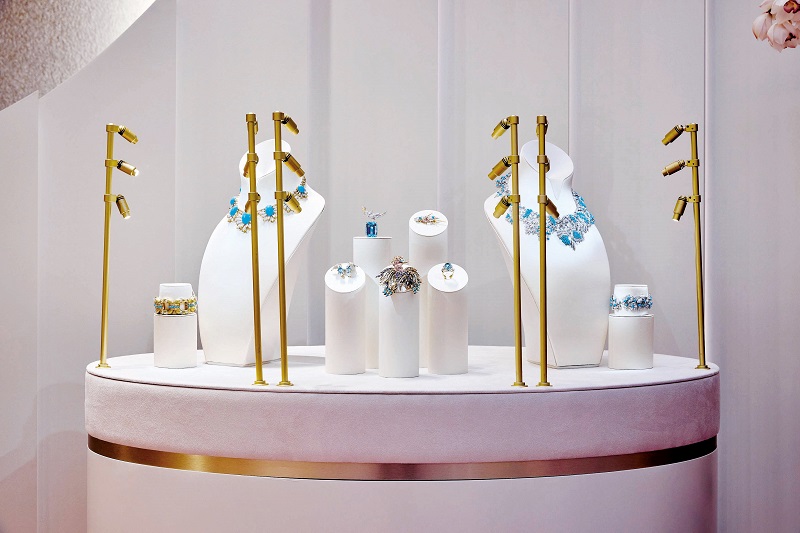
Shine bright
Although incredibly rare by any account, Argyle’s pink diamonds are even more coveted due to the nature of their sale, which is on a by-invitation-only tender process. Launched in 1984, the Argyle Pink Diamond Tender was held annually and, as the mine’s imminent closure became known, suffice to say the 2020 and final 2021 sales delivered record-breaking results.
“We’ve had a great relationship with Argyle and to see one or two [pink Argyle diamonds] is already impressive. But seeing 35 at one go is simply extraordinary,” says Reynolds. “Whether it’s a vivid pink or purple-pink, Argyle diamonds really do have a very saturated strength of colour. And here, you have this entire spectrum of what Argyle offers: intense pinks, purple-pinks, and even a fancy deep red. It’s just wonderful and that’s what makes these diamonds so rare.” A besotted collector even romantically refers to it as “the colour of fairy floss”.
Reynolds does let slip that there were actually a total of 42 pink diamonds on offer initially, but seven failed to make Tiffany’s grade.
“It broke my heart to return them but that’s what happens. Sometimes, you can’t take them all,” she sighs.
That move, however, does lend credence to Tiffany & Co’s reputation as the nonpareil purveyor of the world’s most exceptional stones, a status it first earned when founder Charles Lewis Tiffany made the monumental decision to purchase the famed yellow Tiffany Diamond, discovered in South Africa’s Kimberley mine in 1877, weighing 287.42 carats in the rough. Small wonder he was soon referred to as the “King of Diamonds”.
“Of course, this is also about Mr Tiffany’s legacy,” she agrees. “When you look at all the diamonds we have and the different people [Rio Tinto] could have offered the [pink diamonds] to, we were the right choice for a number of reasons. Out of all the luxury jewellers, we really do have the longest and most authentic history in acquiring the world’s most beautiful gemstones.”
Size doesn't matter
Diamonds are already astoundingly beautiful in any shade and shape but the dreamy pink hue makes it stand out even more in a sea of treasures. For those who enjoy a little bit of chemistry, it is a theoretical fact that yellow and blue diamonds get their vivid colours from trace elements like nitrogen and boron. The source of the pink diamond’s colour, however, remains a mystery. According to Sotheby’s website, it is believed that “the crystal structure of the stone selectively absorbs light as a result of an idiosyncratic lattice defect which causes in an unusual arrangement of atoms in the crystal. These happy anomalies occasionally cause pink graining in the diamond crystal”.
The average man in the street might be shocked to learn that pink diamonds, given the eye-watering price tags that come with them, are considerably more petite than, say, epic rocks like the Moon of Baroda or the gobstopping Cullinan. Most pink diamonds fall within the weight range of 0.3 to under a carat, so only true connoisseurs or collectors would understand their scarcity and rare appeal. And while the majority of new diamond buyers would, understandably, subscribe to “the bigger, the better” school of thought and want a visibly large stone, Reynolds is quick to demur.
tco_1.jpg
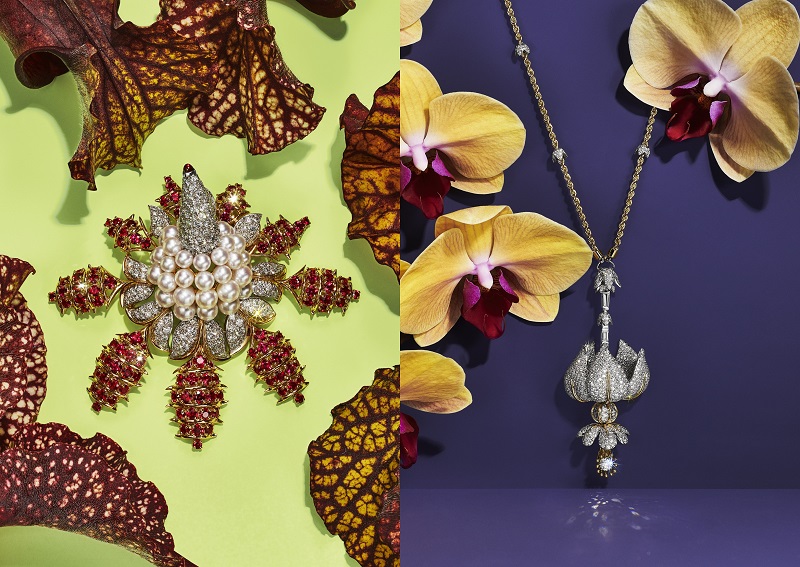
“Pink diamonds are smaller, of course. You would never be able to find a five-carat pink Argyle, for example. So, to have one above a carat is super rare and, guess what, you have three weighing above that in this very collection,” she beams, acknowledging this rarity within rarity. “They tick off all the requisite boxes of rarity, scarcity and beauty and that’s why we had to get them.”
Tiffany & Co’s bean counters are naturally cagey about how much the company paid to acquire the haul but it was reported to be its largest single acquisition of 2022. Also, as the business adage goes, you need to spend money to make money. What is certain is that with Argyle’s closure, each of the 35 precious pink stones is already worth many, many times more.
The design process
Science aside, it is now time for the arts as Reynolds and team face the delicious conundrum of dreaming up ways to create jewellery with the cache. “I get asked frequently if it’s the gemstone or the design that comes first,” she smiles, “but to be honest, it’s a little bit of both. And for [the Tiffany] Blue Book, I work very closely with Nathalie Verdeille, our new chief artistic officer.”
When asked if she ever tires of looking at precious stones, Reynolds immediately retorts: “Never. It never, ever gets tiring and if it did, I think it’d be time to quit. But just look at a stone like the Tiffany Diamond … how can you not get excited by it all over again? Besides finding the stones, it is also an incredible experience watching our designers transform these wonderful things that come out of the earth’s core into a piece of Tiffany & Co jewellery. We have jewellers who work thousands of hours to transform a single piece and it’s like magic. Between them and the CAD designers, I can tell you point-blank that anyone involved in creating the collection loves it. There is a passion … if not, you wouldn’t be doing it.”
Typically, as Reynolds shares, the creative process begins with the stone itself.
“Or the direction I get from the design team,” she laughs. “If it’s about diving into the ocean and seeing nature’s wonders, you’d have a lot of tanzanite, sapphires and opals. If it’s based around individual stones, then it would be a bit more discretionary on my part. But it’s all part of an ongoing process. You know, I am looking [for gemstones] 365 days a year. I don’t stop. We don’t stop. I travel a lot, all over the world … to India, to Europe. It is always a constant search to find the most beautiful stones in the world, that’s it. Wherever there are gems or gem shows, wherever we have direct relationships, I go.
“There are also stones literally coming in all day, every day. I work with the most committed group of wonderful individuals. We start picking the suites or single stones and the design team takes it from there. It can take several years to really build a high jewellery collection but it starts with the ideation, it starts with the colour. It is all part of the educational process, which is so interesting, but it is also about really understanding the source and provenance of the stone.”
tco.jpg
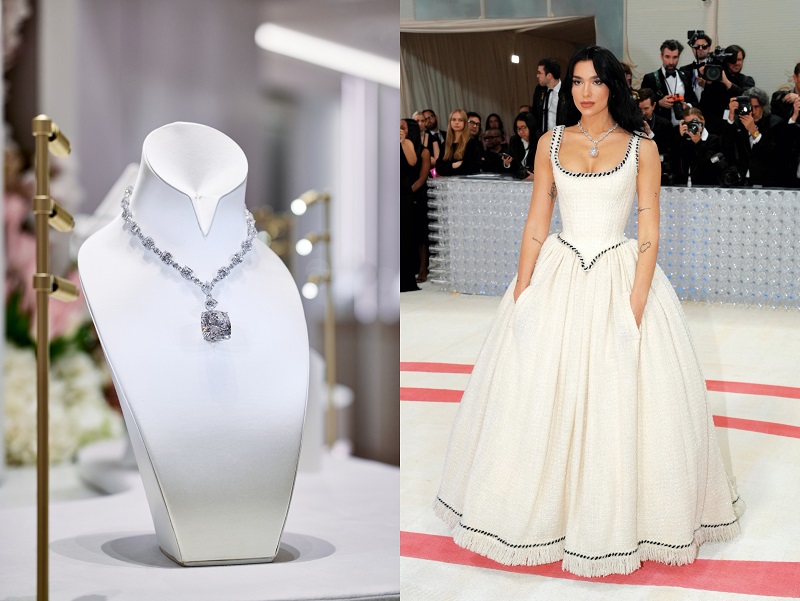
Diamonds are not forever
Visitors to Diamonds & Wonders Sydney would have also not missed seeing the 200-carat Lucida Star high jewellery necklace, worn for the first time by Dua Lipa at the 2023 Met Gala; or the exquisite Empire Diamond, inspired by an archive piece of jewellery that debuted at the 1939 World’s Fair, that is now reimagined as part of a necklace and which can also be transformed into a ring.
Although a dazzling environment to be ensconced in, one important takeaway from the tête-à-tête with Reynolds is that precious stones are becoming increasingly just that — a finite natural resource. As such, the opportunity to own a piece of Mother Nature’s magic is getting rarer.
“That statement goes to the very heart of it all,” Reynolds concurs. “Yes, diamonds are forever and yet they are not. Look at the Argyle diamonds. There won’t ever be any more. So yes, it’s getting more difficult to find the most extraordinary stones, so we just have to look longer and harder. Adding to that is the fact that it is not enough for a gemstone to be beautiful at Tiffany & Co. It has to be sustainably sourced, conflict-free … and this is something I am very, very proud of.
“When sanctions were imposed on Myanmar in 2009, we stood by that and did not sell a single Burmese ruby. That says a lot and also because it was the right thing to do. I like to believe we at Tiffany & Co lead by example. As a jeweller and a company, we really do care about the environment, supporting human rights and making sure that the land [our associates mine on] is returned to its original condition. We are invested in all these for the long term and doing things right matters as much to us as finding the most beautiful gemstones.”
Clearly and fortunately, Reynolds is to the manner born. Having worked with the New York City-based company since the summer of 1987, she marked the start of her 36 years-and-counting career by auspiciously buying a Tiffany gold watch. “[It was] the first significant piece I bought for myself.”
Although the four-decade milestone is fast approaching, the passion of the company’s first female chief gemologist in its 186-year history remains palpable as ever.
“The best part of my job is that I get to be collaborative. It also helps to be inquisitive, always looking to learn. And the fact I get to learn every day is an extraordinary gift.”
When pressed to list the qualities that might help others follow in her footsteps, she smiles and adds: “I think you do need to have a good eye for colour. You must be able to recognise beauty … and then be able to see what you can do with it while working with a whole team of people. In fact, that’s the most fun we have as everyone gets to contribute something to the collections. At Tiffany & Co, we have a brilliant design team. We have exceptional jewellers. We have gemologists who spend their whole lives devoted to finding the most beautiful gemstones in the world. So, while a design can create an extraordinary collection, passion and a sense of inquisitiveness are two other things or elements needed. Oh, and don’t even think it’s a nine-to-five job. It’s not,” she says, laughingly wagging a finger.
It’s a fact Reynolds herself has so clearly proven by flying halfway around the world just to be with the last pink Argyle diamonds the world would ever unearth.
This article first appeared on June 12, 2023 in The Edge Malaysia.

